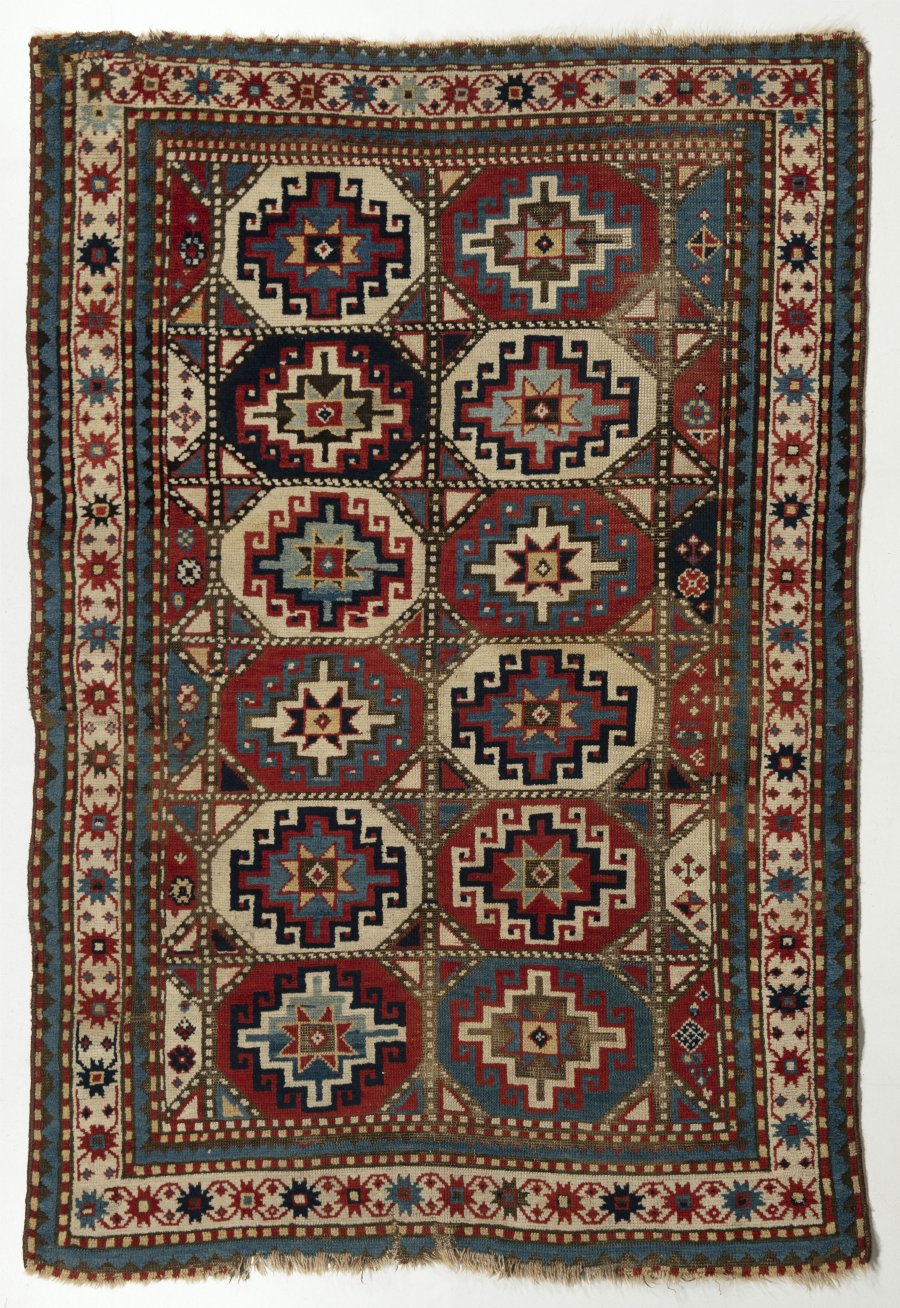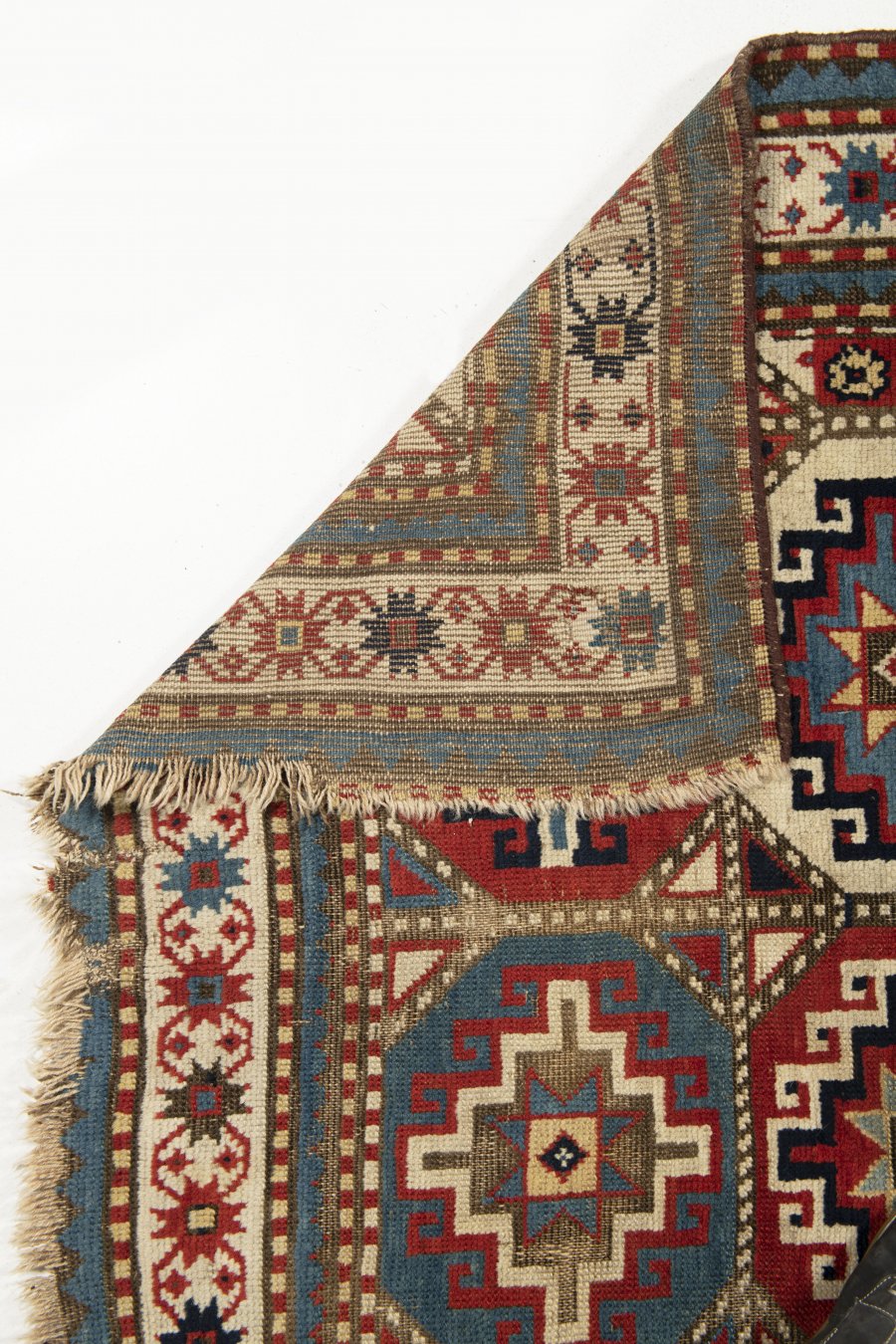Lot 132
AN ANTIQUE MOGHAN KAZAK RUG
um 1880
179 x 118 cm (h x b)
| 739 EUR
| 913 EUR
The offered hand-knotted wool rug on wool warp is a wonderful proof of the connection between the world of high art painting and eastern carpets. Authentic carpets, especially from the Ottoman Empire, appear repeatedly in the paintings of the Old Masters, and to this day some Anatolian designs are named after famous masters (for example, the Italian Renaissance painter Lorenzo Lotto unwittingly lent his name to a carpet composition from Western Anatolia). Also, the great Dutch painter of the Middle Ages, the Flemish master Hans Memling (c. 1430-1494), painted religious scenes in his famous paintings and still lifes with oriental carpets, which were already deservedly admired in Europe at the time. The Ottoman carpets in Memling's paintings in 15. In the 15th century, a mysterious hook-like motif appears in the octagon, and the same motifs are still used on Turkish, Persian, Caucasian and Turkmen carpets today - in these diverse environments, it is probably a stylisation of the dragon, which appeared extensively in fashionable Chinese art, and dragon motifs were subsequently transmitted and copied in nomadic cultures, of which the old carpets in particular have survived. The design of the 'Moghan' carpet is decorated with 12 multicoloured 'Memling spheres' (octagons with dragons in which stars are placed as a symbol of good luck, plus a 'magic eye' inside the star, another influential symbol to protect good luck). The octagons are separated by a diamond motif, which is artfully divided into four triangles, which are considered to be a good luck charm that protects against bad luck and evil fate. This composition is charmingly surrounded by a so-called crab border in white, but the crab is only seemingly reminiscent of geometrized flowers connected by square tendrils. A breathtaking specimen that is a powerful representative of a category of antique Caucasian carpets sought after by collectors.
Andere Auktionsgegenstände
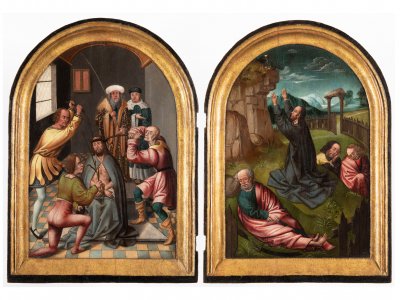
Lot 1 ALTAR WINGS
Rufpreis60 000 CZK | 2 609 EUR
Erzielter Preis
180 000 CZK | 7 826 EUR
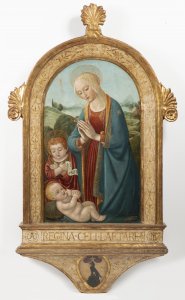
Lot 2 MADONNA WITH JESUS AND ST. JOHN THE BAPTIST
Rufpreis800 000 CZK | 34 783 EUR
Erzielter Preis
1 700 000 CZK | 73 913 EUR
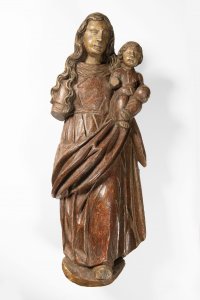
Lot 3 MADONNA WITH CHILD
Rufpreis45 000 CZK | 1 957 EUR
Erzielter Preis
50 000 CZK | 2 174 EUR
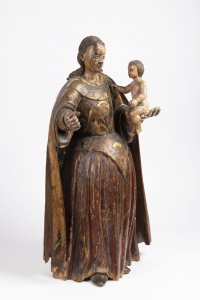
Lot 4 MADONNA WITH A CHILD
Rufpreis45 000 CZK | 1 957 EUR
Erzielter Preis
50 000 CZK | 2 174 EUR
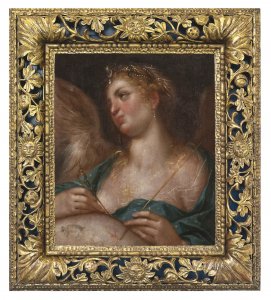
Lot 5 URANIA
Rufpreis180 000 CZK | 7 826 EUR
Erzielter Preis
370 000 CZK | 16 087 EUR
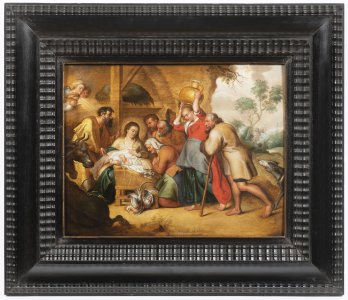
Lot 6 ADORATION OF SHEPHERDS
Rufpreis120 000 CZK | 5 217 EUR
Erzielter Preis
120 000 CZK | 5 217 EUR
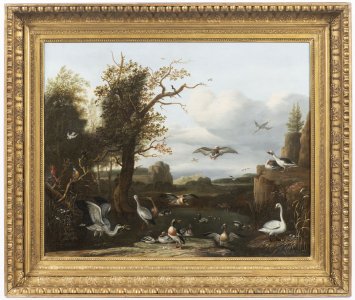
Lot 7 ALLEGORY OF AIR
Rufpreis55 000 CZK | 2 391 EUR
Erzielter Preis
110 000 CZK | 4 783 EUR
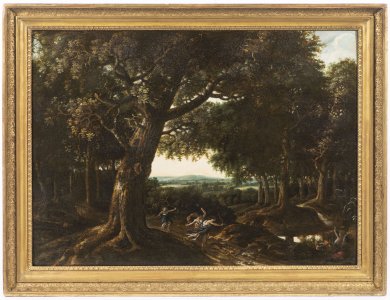
Lot 8 HUNTING DIANA
Rufpreis55 000 CZK | 2 391 EUR
Erzielter Preis
55 000 CZK | 2 391 EUR
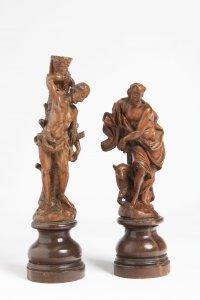
Lot 9 TWO BAROQUE SMALL SCULPTURES
Rufpreis35 000 CZK | 1 522 EUR
Erzielter Preis
70 000 CZK | 3 043 EUR
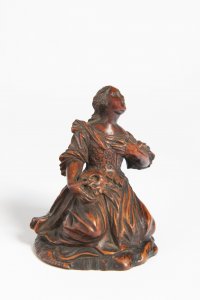
Lot 10 SAINT MARY MAGDALENE
Rufpreis12 000 CZK | 522 EUR
Erzielter Preis
20 000 CZK | 870 EUR
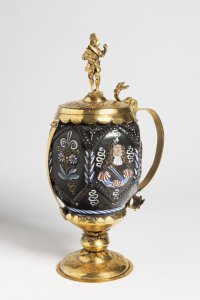
Lot 11 CERAMIC TANKARD IN GILDED MOUNTING
Rufpreis40 000 CZK | 1 739 EUR
Erzielter Preis
42 000 CZK | 1 826 EUR
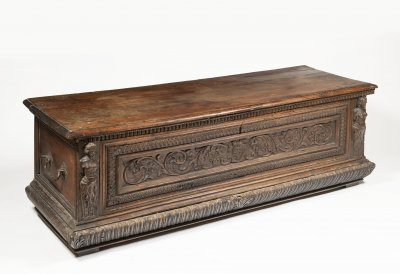
Lot 12 A MANNERIST CHEST
Rufpreis55 000 CZK | 2 391 EUR
Erzielter Preis
70 000 CZK | 3 043 EUR
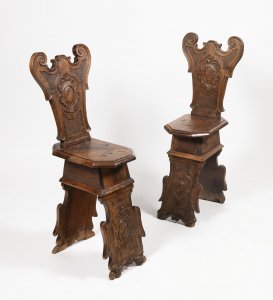
Lot 13 A PAIR OF MANNERIST SGABELLO CHAIRS
Rufpreis24 000 CZK | 1 043 EUR
Erzielter Preis
30 000 CZK | 1 304 EUR
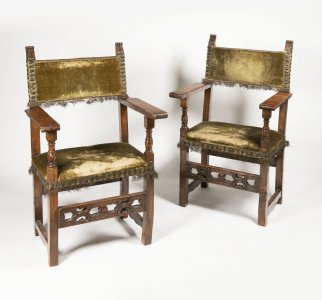
Lot 14 A PAIR OF MANNERIST ARMCHAIRS
Rufpreis30 000 CZK | 1 304 EUR
Erzielter Preis
30 000 CZK | 1 304 EUR
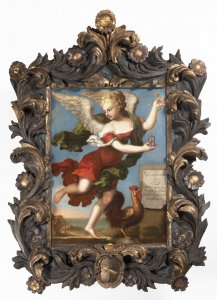
Lot 15 ALLEGORY OF TIME
Rufpreis110 000 CZK | 4 783 EUR
Erzielter Preis
290 000 CZK | 12 609 EUR
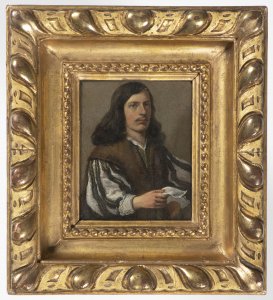
Lot 16 PORTRAIT OF A NOBLEMAN
Rufpreis8 000 CZK | 348 EUR
Erzielter Preis
8 000 CZK | 348 EUR
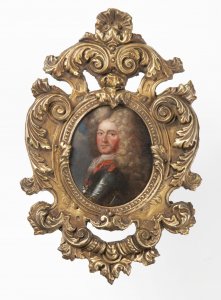
Lot 17 PORTRAIT OF A NOBLEMAN
Rufpreis12 000 CZK | 522 EUR
Erzielter Preis
15 000 CZK | 652 EUR
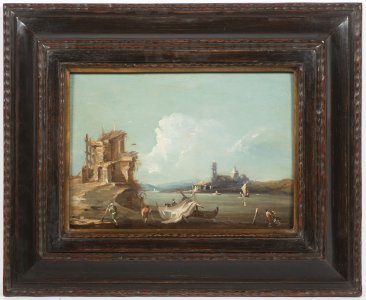
Lot 18 LANDSCAPE NEAR VENICE
Rufpreis18 000 CZK | 783 EUR
Erzielter Preis
24 000 CZK | 1 043 EUR
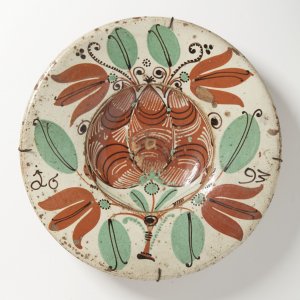
Lot 19 A PLATE
Rufpreis40 000 CZK | 1 739 EUR
Erzielter Preis
40 000 CZK | 1 739 EUR
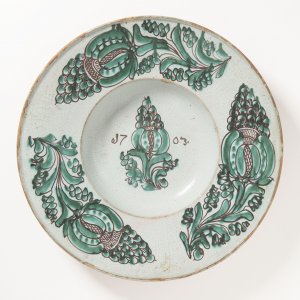
Lot 20 A ZITTAU PLATE
Rufpreis45 000 CZK | 1 957 EUR
Erzielter Preis
45 000 CZK | 1 957 EUR
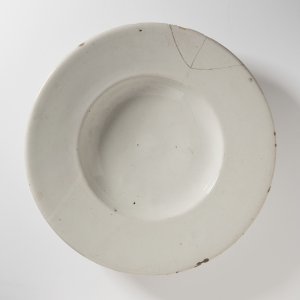
Lot 21 A HABAN PLATE
Rufpreis55 000 CZK | 2 391 EUR
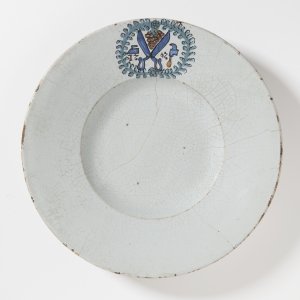
Lot 22 A HABAN PLATE
Rufpreis70 000 CZK | 3 043 EUR
Erzielter Preis
120 000 CZK | 5 217 EUR
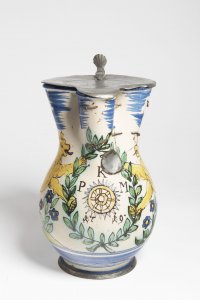
Lot 23 A HABAN JUG WITH LID
Rufpreis55 000 CZK | 2 391 EUR
Erzielter Preis
55 000 CZK | 2 391 EUR
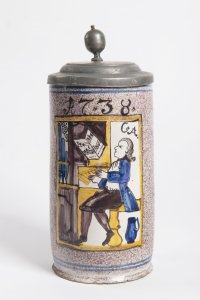
Lot 24 A POSTHABAN TANKARD
Rufpreis48 000 CZK | 2 087 EUR
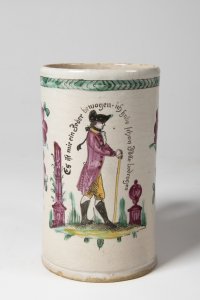
Lot 25 A POSTHABAN TANKARD
Rufpreis25 000 CZK | 1 087 EUR
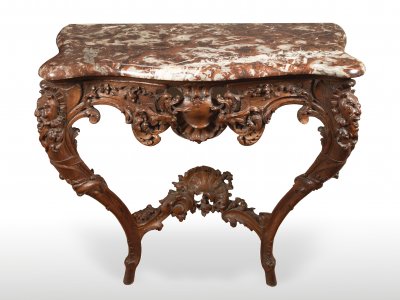
Lot 26 A REGENCE PERIOD FRENCH CONSOLE TABLE
Rufpreis30 000 CZK | 1 304 EUR
Erzielter Preis
32 000 CZK | 1 391 EUR
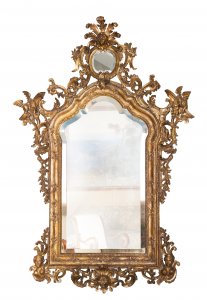
Lot 27 AN ITALIAN BAROQUE MIRROR
Rufpreis65 000 CZK | 2 826 EUR
Erzielter Preis
65 000 CZK | 2 826 EUR
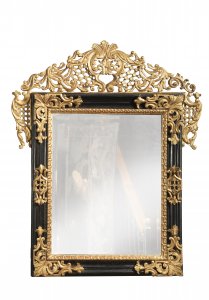
Lot 28 A BAROQUE MIRROR
Rufpreis28 000 CZK | 1 217 EUR
Erzielter Preis
28 000 CZK | 1 217 EUR
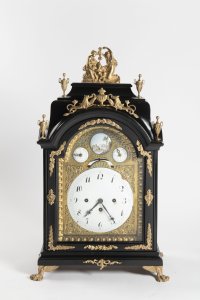
Lot 29 A PRAGUE BAROQUE TABLE CLOCK
Rufpreis40 000 CZK | 1 739 EUR
Erzielter Preis
60 000 CZK | 2 609 EUR
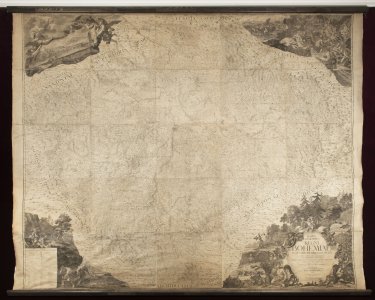
Lot 30 MÜLLER'S MAP OF BOHEMIA
Rufpreis120 000 CZK | 5 217 EUR
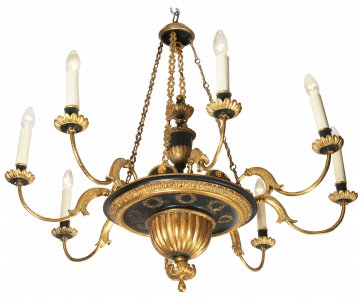
Lot 31 AN EMPIRE CHANDELIER
Rufpreis85 000 CZK | 3 696 EUR
Erzielter Preis
85 000 CZK | 3 696 EUR
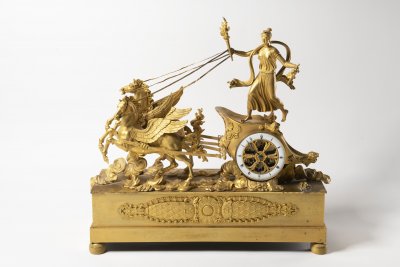
Lot 32 AN EMPIRE TABLE CLOCK
Rufpreis80 000 CZK | 3 478 EUR
Erzielter Preis
100 000 CZK | 4 348 EUR
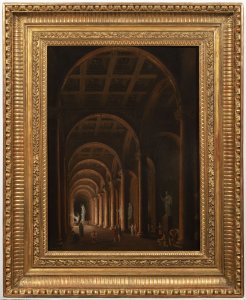
Lot 33 INTERIOR OF ANCIENT TEMPLE
Rufpreis120 000 CZK | 5 217 EUR
Erzielter Preis
140 000 CZK | 6 087 EUR
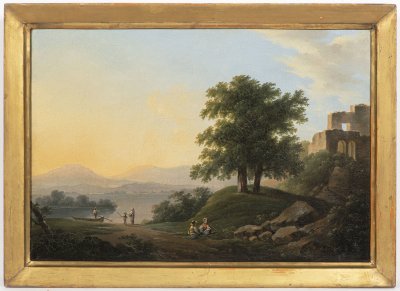
Lot 34 LANDSCAPE WITH A LAKE
Rufpreis18 000 CZK | 783 EUR
Erzielter Preis
28 000 CZK | 1 217 EUR
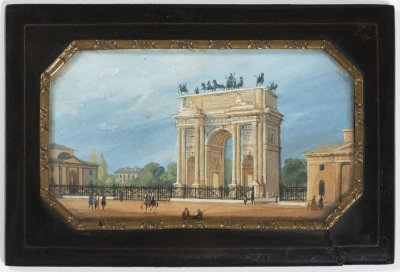
Lot 35 ARCH OF TRIUMPH IN MILAN
Rufpreis10 000 CZK | 435 EUR
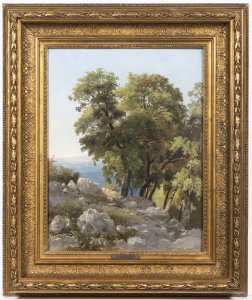
Lot 36 ITALIAN LANDSCAPE
Rufpreis45 000 CZK | 1 957 EUR
Erzielter Preis
47 000 CZK | 2 043 EUR
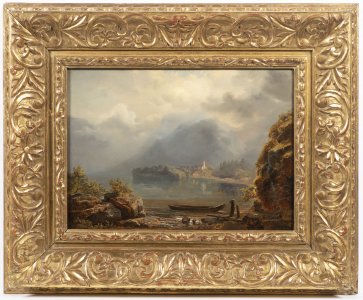
Lot 37 ALPINE LANDSCAPE WITH A LAKE
Rufpreis90 000 CZK | 3 913 EUR
Erzielter Preis
170 000 CZK | 7 391 EUR
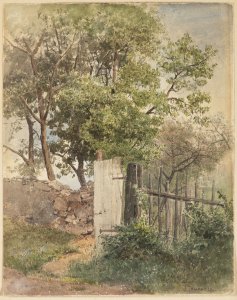
Lot 38 BY THE FENCE
Rufpreis25 000 CZK | 1 087 EUR
Erzielter Preis
28 000 CZK | 1 217 EUR
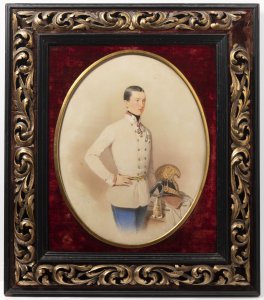
Lot 39 ARCHDUKE KARL LUDWIG
Rufpreis25 000 CZK | 1 087 EUR
Erzielter Preis
41 000 CZK | 1 783 EUR
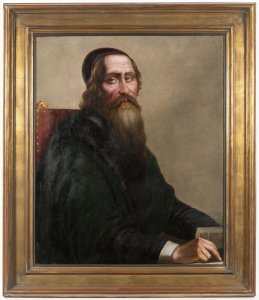
Lot 40 JAN AMOS KOMENSKÝ
Rufpreis120 000 CZK | 5 217 EUR
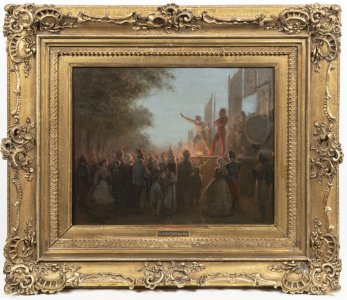
Lot 41 PARISIAN COMEDIANS
Rufpreis180 000 CZK | 7 826 EUR
Erzielter Preis
180 000 CZK | 7 826 EUR
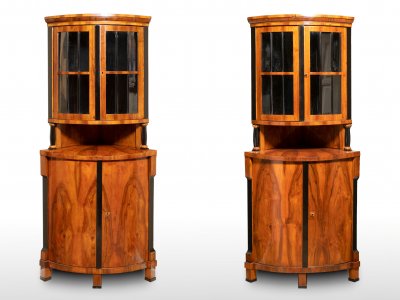
Lot 42 A PAIR OF BIEDERMEIER CORNER DISPLAY CABINETS
Rufpreis95 000 CZK | 4 130 EUR
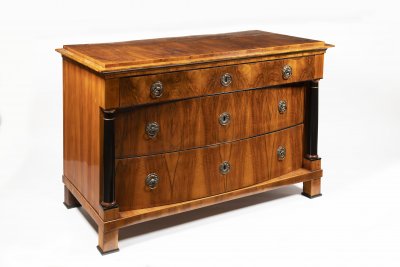
Lot 43 A BIEDERMEIER CHEST OF DRAWERS
Rufpreis28 000 CZK | 1 217 EUR
Erzielter Preis
28 000 CZK | 1 217 EUR
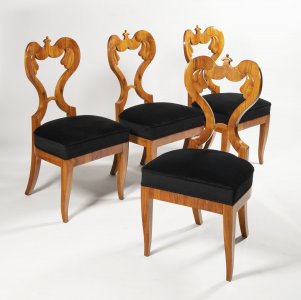
Lot 44 A SET OF FOUR BIEDERMEIER CHAIRS
Rufpreis70 000 CZK | 3 043 EUR
Verkauft
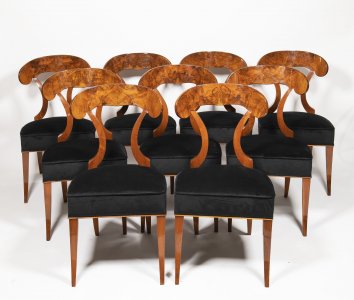
Lot 45 A SET OF NINE BIEDERMEIER CHAIRS
Rufpreis160 000 CZK | 6 957 EUR
Erzielter Preis
210 000 CZK | 9 130 EUR
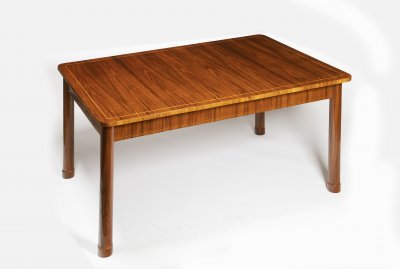
Lot 46 A BIEDERMEIER FOLDING DINING TABLE
Rufpreis75 000 CZK | 3 261 EUR
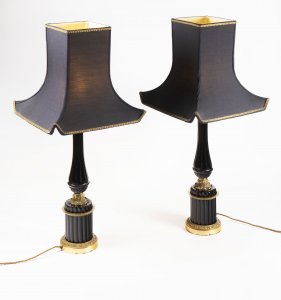
Lot 47 A PAIR OF NEOCLASSICAL TABLE LAMPS
Rufpreis19 000 CZK | 826 EUR
Erzielter Preis
30 000 CZK | 1 304 EUR
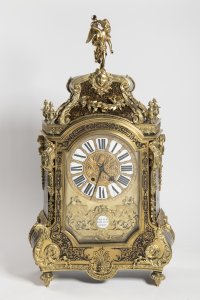
Lot 48 A LOUIS XIV STYLE TABLE CLOCK
Rufpreis55 000 CZK | 2 391 EUR
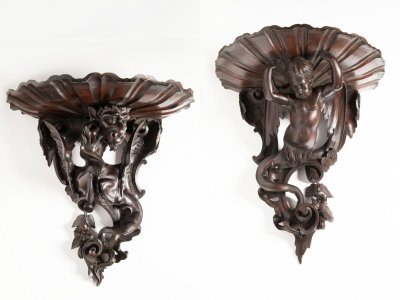
Lot 49 A PAIR OF BAROQUE STYLE CONSOLES
Rufpreis12 000 CZK | 522 EUR
Erzielter Preis
14 000 CZK | 609 EUR
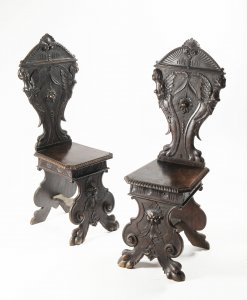
Lot 50 A PAIR OF RENAISSANCE STYLE SGABELLO CHAIRS
Rufpreis14 000 CZK | 609 EUR
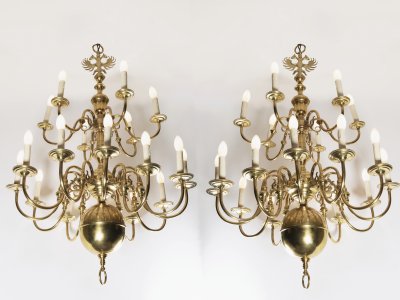
Lot 51 A PAIR OF DUTCH CHANDELIERS
Rufpreis60 000 CZK | 2 609 EUR
Erzielter Preis
70 000 CZK | 3 043 EUR
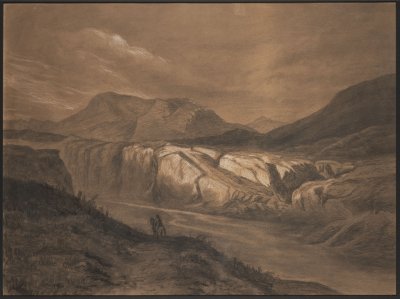
Lot 52 ROCKY LANDSCAPE WITH A RIDER
Rufpreis18 000 CZK | 783 EUR
Erzielter Preis
19 000 CZK | 826 EUR
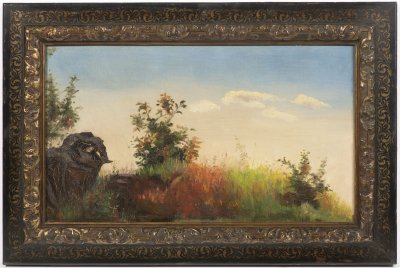
Lot 53 LANDSCAPE AT SUNSET
Rufpreis48 000 CZK | 2 087 EUR
Erzielter Preis
60 000 CZK | 2 609 EUR
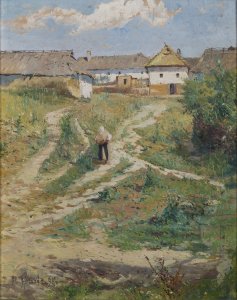
Lot 54 ON THE WAY TO THE VILLAGE
Rufpreis40 000 CZK | 1 739 EUR
Erzielter Preis
130 000 CZK | 5 652 EUR
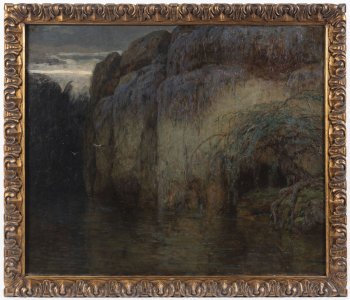
Lot 55 TWILIGHT
Rufpreis70 000 CZK | 3 043 EUR
Erzielter Preis
80 000 CZK | 3 478 EUR
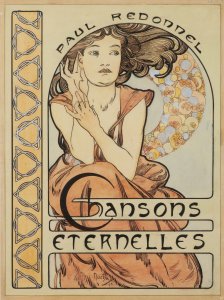
Lot 56 LES CHANSONS ÉTERNELLES
Rufpreis370 000 CZK | 16 087 EUR
Erzielter Preis
380 000 CZK | 16 522 EUR
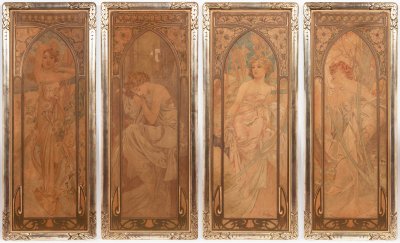
Lot 57 TIMES OF THE DAY
Rufpreis120 000 CZK | 5 217 EUR
Erzielter Preis
130 000 CZK | 5 652 EUR
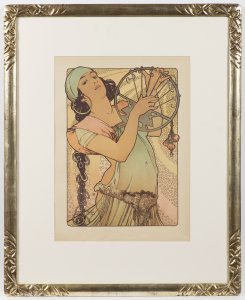
Lot 58 SALOME
Rufpreis16 000 CZK | 696 EUR
Erzielter Preis
32 000 CZK | 1 391 EUR
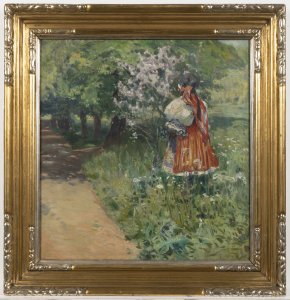
Lot 59 GIRL FROM SLOVÁCKO IN AN ALLEY
Rufpreis65 000 CZK | 2 826 EUR
Erzielter Preis
230 000 CZK | 10 000 EUR
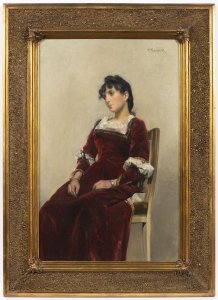
Lot 60 SITTING GIRL
Rufpreis55 000 CZK | 2 391 EUR
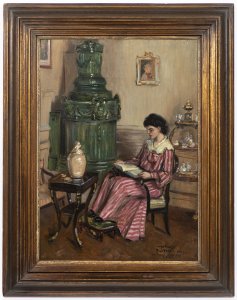
Lot 61 LADY IN AN ARMCHAIR
Rufpreis40 000 CZK | 1 739 EUR
Verkauft
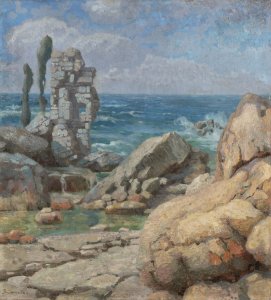
Lot 62 SEA CLIFFS IN DALMATIA
Rufpreis45 000 CZK | 1 957 EUR
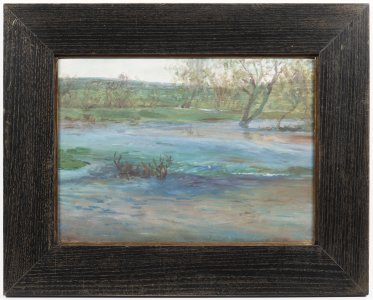
Lot 63 FLOODED MEADOWS IN THE EVENING
Rufpreis35 000 CZK | 1 522 EUR
Erzielter Preis
80 000 CZK | 3 478 EUR
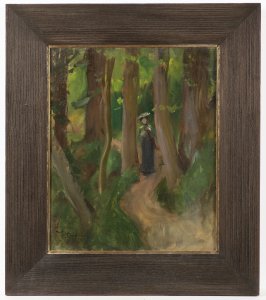
Lot 64 LADY ON A FOREST PATH
Rufpreis30 000 CZK | 1 304 EUR
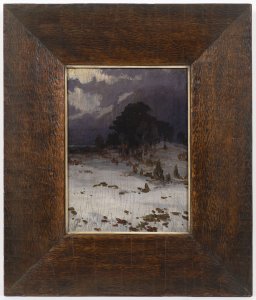
Lot 65 WINTER LANDSCAPE
Rufpreis35 000 CZK | 1 522 EUR
Erzielter Preis
37 000 CZK | 1 609 EUR
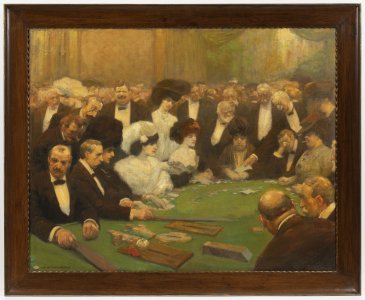
Lot 66 IN THE CASINO
Rufpreis240 000 CZK | 10 435 EUR
Erzielter Preis
320 000 CZK | 13 913 EUR
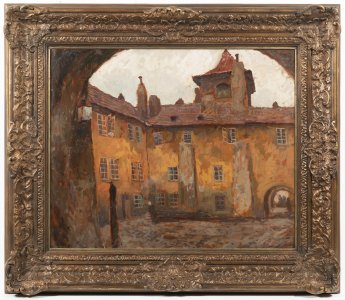
Lot 67 THE COURT OF THE AMBITUS OF THE ST. AGNES CONVENT
Rufpreis950 000 CZK | 41 304 EUR
Erzielter Preis
950 000 CZK | 41 304 EUR
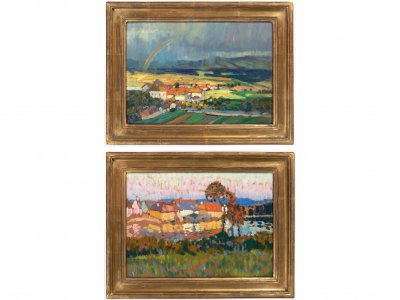
Lot 68 PAIR OF LANDSCAPES
Rufpreis24 000 CZK | 1 043 EUR
Erzielter Preis
110 000 CZK | 4 783 EUR
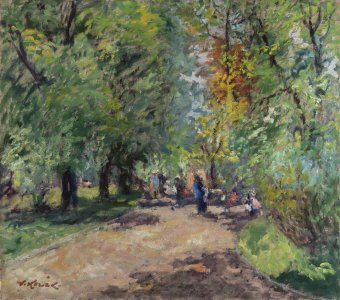
Lot 69 STROMOVKA
Rufpreis25 000 CZK | 1 087 EUR
Erzielter Preis
38 000 CZK | 1 652 EUR
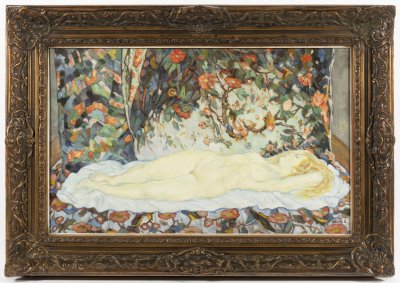
Lot 70 RECLINING NUDE
Rufpreis250 000 CZK | 10 870 EUR
Erzielter Preis
480 000 CZK | 20 870 EUR
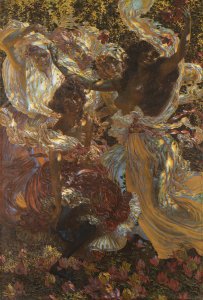
Lot 71 PLAY OF SUN STREAKS
Rufpreis3 500 000 CZK | 152 174 EUR
Erzielter Preis
6 100 000 CZK | 265 217 EUR
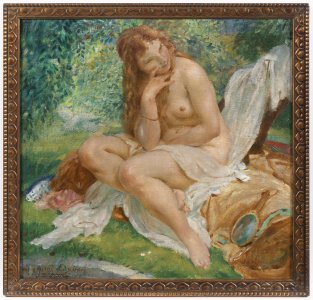
Lot 72 GIRL IN THE GARDEN
Rufpreis65 000 CZK | 2 826 EUR

